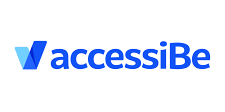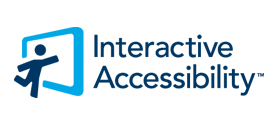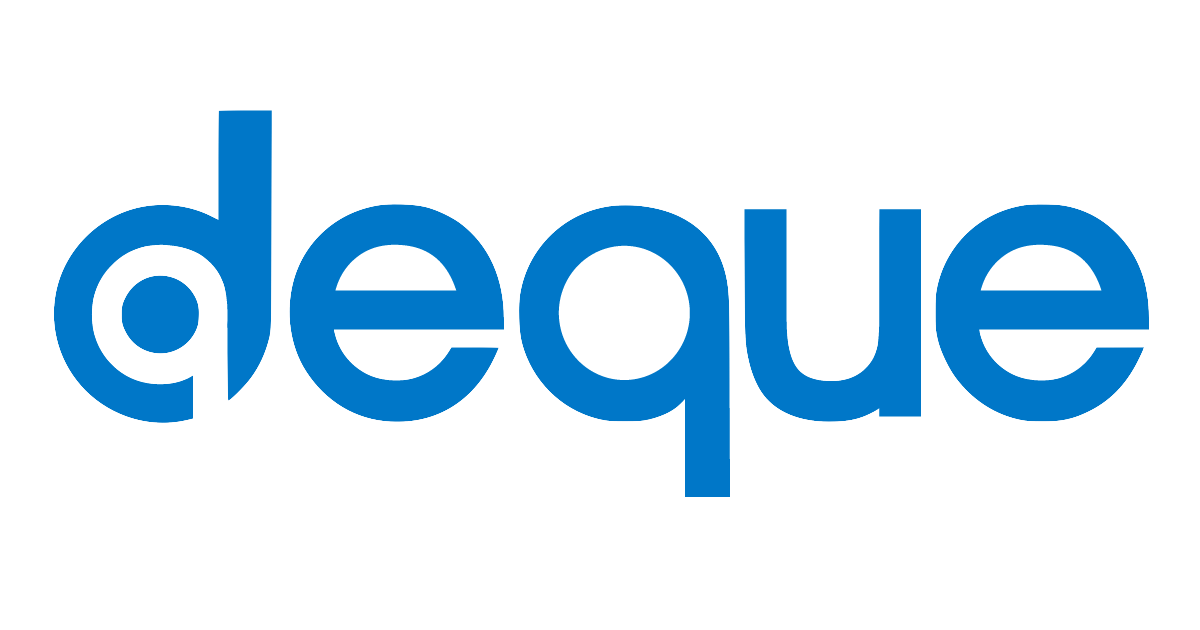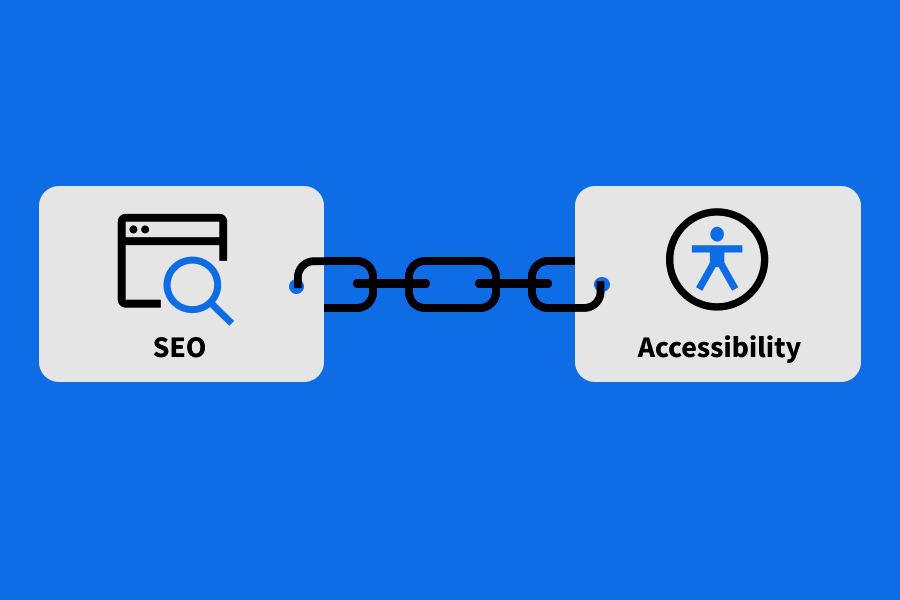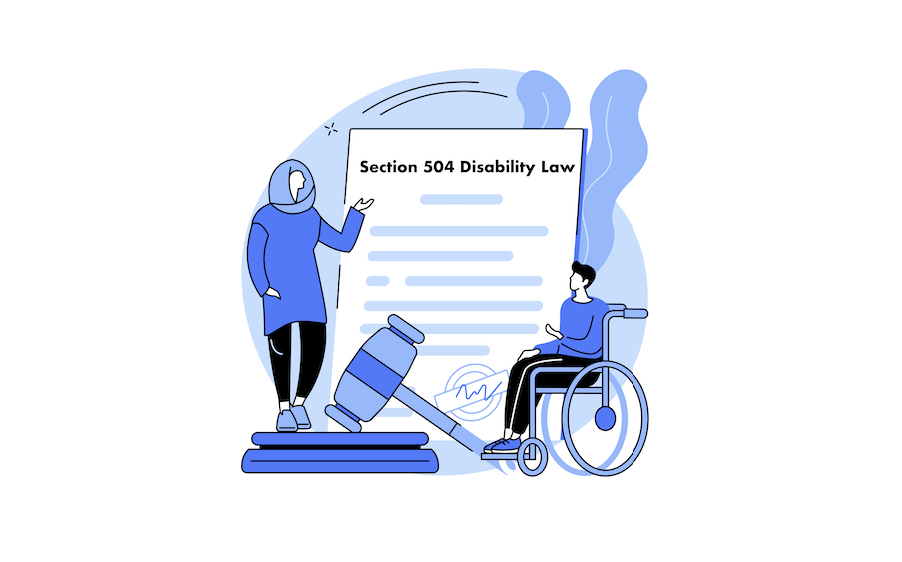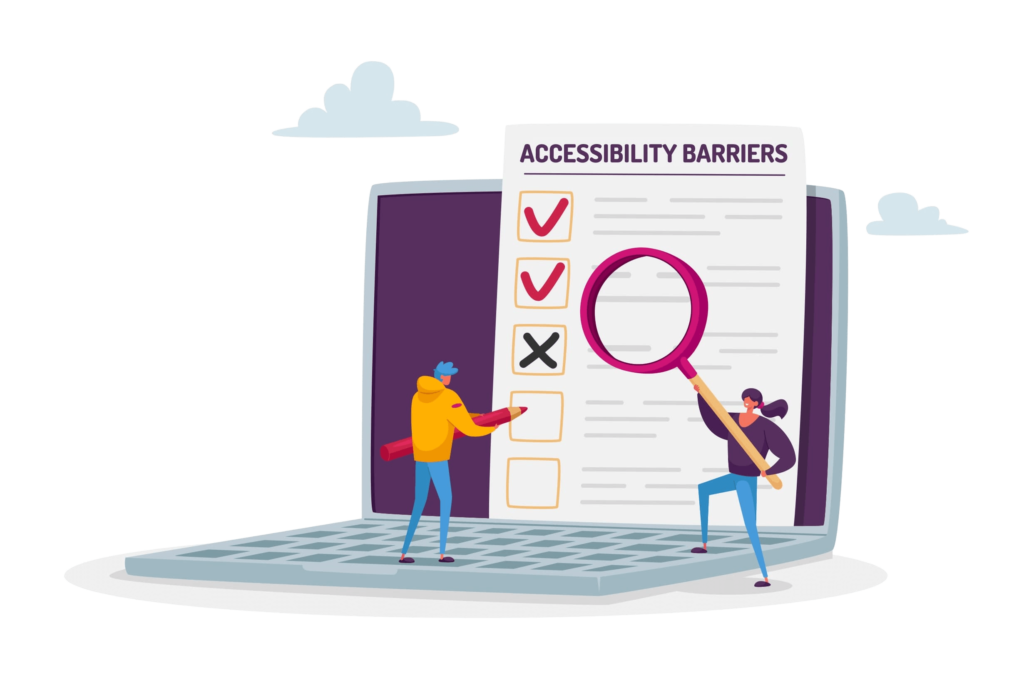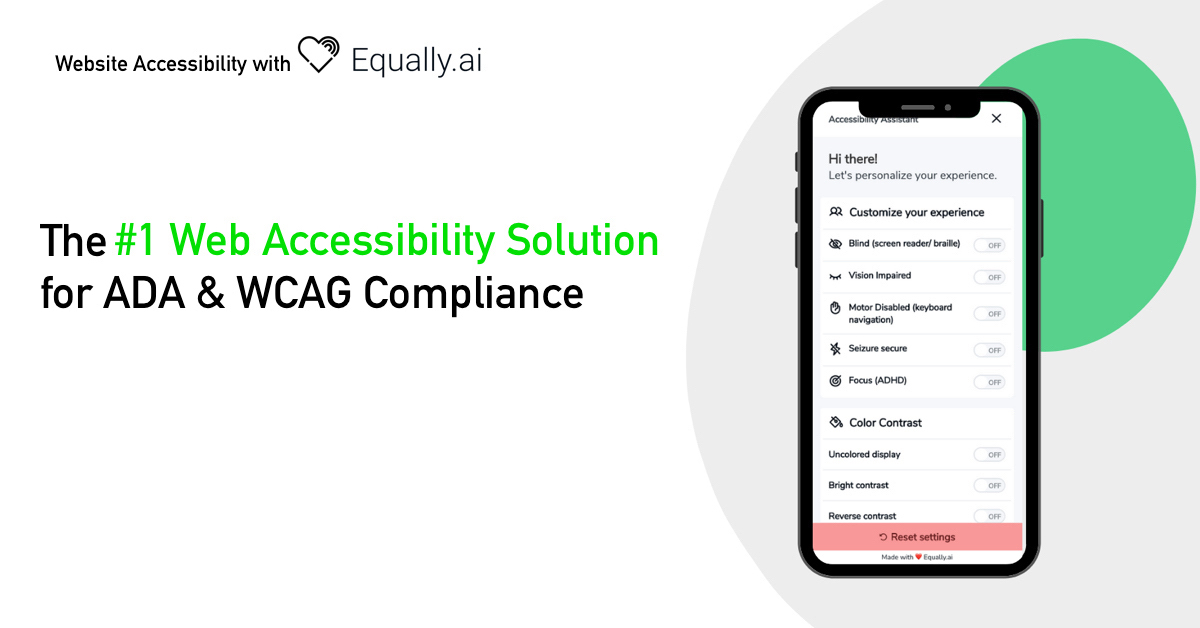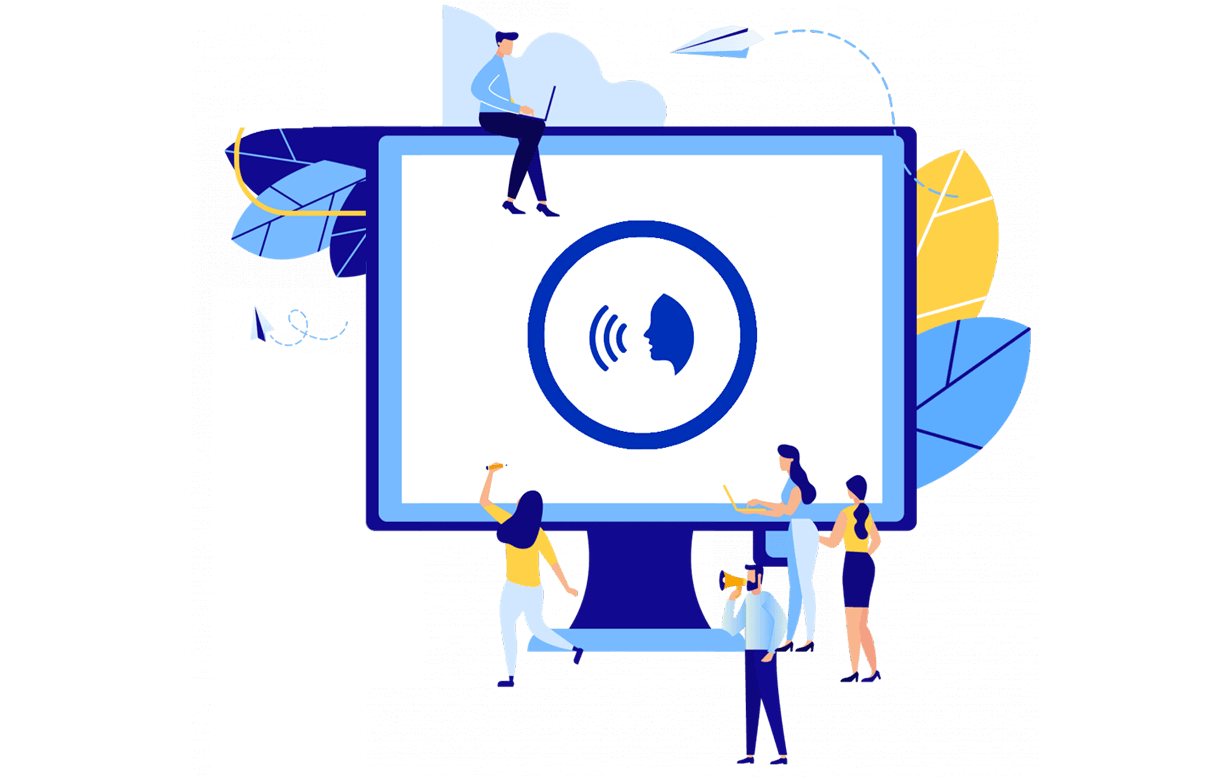
With the pace of technological evolution that the world has undergone over the past few decades, it’s almost logical – defying that more than a billion people with disabilities still face major disadvantages by accessing basic resources such as the Internet. Of this number, about 18.5 million people have voice, speech, or language disabilities. Although this may sound unreasonable and even unbelievable, it is our society’s harsh reality and this needs to change. Disability doesn’t have to indicate disadvantage, everyone deserves to enjoy something as important as the internet. Developers must guarantee that the internet is also accessible for people with specific disabilities, including speech disabilities.
What is Speech Disability?
Speech disability is a form of disability that prevents a person from producing or articulating spoken words. This inability ranges from the difficulty of pronouncing syllables with fluency to the complete loss of voice and even altering any recognizable voice.
Like most other forms of disability, speech disability could be natural and genetic, but also occur by diseases. As mentioned before, around 18.5 million people around the world live with some form of speech disability. Currently, in the USA alone, more than 7.5 million people live with a speech disability. In Australia, this condition affects about 1.1 million people, and the situation is not so different in the rest of the world.
However, despite the prevalence of this disability type, it’s unfortunate that not many website developers have done enough to address the difficulties faced by those living with speech disorders. This lack of adaptability has also prompted a range of online platforms to adopt a multitude of new technology that do not favor speech-disabled people.
Types of Speech Disabilities
Mutism
Characterized by a person’s inability to make any speech sound, this is the most extreme type of speech disorder. This can happen naturally at birth or could be genetic. Mutism can also be a result of a disease and even as a result of an injury. We understand that the medical term – mutism – is quite complicated, but we will attempt to break it down.
Primarily, there are two types of mutism – selective mutism and neurogenic mutism. Selective mutism is quite common in children and could be present in adults too. People affected by selective mutism can comprehend spoken words but cannot speak in specific social spaces. This could be a result of shyness or other factors. When not taken seriously, selective mutism could be a severe issue.
However, we discovered that Neurogenic mutism is the other type of autism and is caused by damage to the brain. This condition results in a total loss of speech voice. Neurogenic mutism can be for the short or the long term, and it could be static or progressive. This type of autism can be caused by severe nervous disease, brain injury, surgery, dementia, medication, or seizure.
Stuttering and Cluttering
These are some of the most common forms of speech disorder all over the world. It is estimated that over one percent of our entire world’s population stutter. This number accounts for over seventy million people around the globe. Stuttering is a communication disorder that involves an involuntary disruption in a person’s speech. Some words or even syllables might be involuntarily repeated and prolonged. Sometimes, speeches are blocked completely.
Cluttering, however, is a disorder that affects the cohesiveness of words. It involves the involuntary rapid production of speech or remarks that lack syntax and rhythmic consistency. Thus, the speech that starts to be clear might slur out after a while. It is common for people living with cluttering disorders to embrace selective mutism.
Apraxia
Apraxia is a neurological condition where a person loses control of coordinated muscle or nerve movement. Thus, even the part of the brain that controls speech fluency is affected. When this happens, it might result in prolonged speech production, characterized by several attempts before a single syllable or word is produced. This disability may be caused by stroke and other forms of severe brain injuries and diseases.
This condition is also a very critical speech disability affecting millions across the globe. In Canada alone, over a hundred thousand people (out of which 3.5% are children) live with this condition, and the situation isn’t different in other parts of the world. There are at least two million people in the USA with this condition. In the U.K, more than two hundred and fifty thousand people live with Apraxia. Also, in Australia, where over one million people live with a speech disability, sixteen percent of that number have stroke-induced Apraxia.
Dysarthria
Although with quite peculiar symptoms and effects, this condition is very similar to Apraxia. It happens when there is brain damage, which affects the nerves that control speech. This condition also weakens the respiratory system, causing words produced to sound breathy and shaky.
People living with Dysarthria may also produce slurry speeches, hoarse sounds, and may mumble inaudible words. These conditions occur because the patient cannot control the tongue, larynx, vocal cords, and other surrounding muscles. The disease is more prevalent in patients that have suffered from a stroke.
Thus, in the United Kingdom, over fifty thousand people are living with stroke-related Dysarthria. Other causes of this condition may include Cerebral Palsy, Muscular Dystrophy, Parkinson’s disease, Amyotrophic Lateral Sclerosis, Huntington’s disease, and others.
Web Accessibility Barriers and Difficulties Experienced by Users with Speech Disability
Technology is changing rapidly to embrace convenience for all. However, the sad reality remains that we do not include entirely our disabled population in this fast race for technological convenience.
One of the recent technology highlights is the voice command in software applications and websites. Now, creators focus more on hearing from the users to prompt action but fail to create a channel to hear from the users without any difficulty.
The voice command technology allows users to prompt commands and web inquiries using speech. As fantastic as this may be in terms of convenience and time-efficiency, users with speech disabilities will find it quite challenging to use.
It is no longer a novelty to find websites having automatic hotlines and call centers that rely heavily on speech command. Without an alternative for persons with speech disabilities, accessing these websites for tangible inquiries and access to better information will be difficult.
Just like a library, creators should design websites in a way that contents are easy to access. The layout must be simple, and navigation must be seamless. Straightforward navigation makes it easy for autistic users with speech disabilities. They can easily navigate the content hub, and they can turn off certain features that rob them of specific commands on the website.
Available Solution for Web Inaccessibility by Users with Speech Disability
It is no longer desirable to have software and websites designed with mainly voice command features. To cater to the needs of people living with a speech disability, creators must include an active email rapid response feature together with a voice command feature. These tools allow people with voice or speech impairment to type their inquiries or command. By embracing text-based chat, email, forum, and form features in most web applications, contents will become more interactive and accessible.
It is important that we set up a layout with features so we can avoid unnecessary animation pop-ups or videos that we focused on interaction. If web apps are important for use, developers must ensure that web applications do not rely on voice-only interaction. The website should not only provide a telephone number to connect with the company.
In addition, the implementation of more assistive technology by web designers will make their websites more accessible. Introducing support features such as word prediction, speech-generating software, alternative keyboards, and eye-tracking technology can build online apps and channels that are easily accessible and navigable.
Building Accessible Web Applications for People Living with a Speech Disability
This web accessibility solution will help you identify accessibility issues that are peculiar to speech disabilities. The solution also offers quick-fix recommendations to these accessibility issues and keeps you updated with the global accessibility compliance trend. It is one of the leading software solutions in the USA, Australia, and Canada.
This solution helps us to audit your overall web design to ensure it is accessible and secure your website is designed according to the Web Content Accessibility Guidelines 2.1.
This solution makes your website to be as digitally accessible as possible. It gives your users a refreshing experience on your website by making your content impressively accessible. They fuse an advanced level of artificial intelligence and certified experts in creating websites that in total compliance with WCAG and ADA requirements. Leading global brands like Samsung, Kia, and Tommy Hilfiger have trusted this solution to cater to their users. You, too, can. They offer a free trial for new users and provide affordable service rates.
This solution also explores assistive technology to make your website more accessible to people with a speech disability. They host limited web auditing to help you identify accessibility issues. Using their widget and solution services, you will be able to bring your website to full compliance with both WCAG 2.1 and Section 508 / 504 of the Rehabilitation Act.
Conclusion
It is a total injustice for speech-impaired users to be denied complete accessibility to websites. As technology advances, we must do away with one-sided modern systems and incline towards all-inclusive innovations that remove users’ barriers with a speech disability. In general, there is a need to enhance accessibility to make all websites friendly for all.
With many leading platforms now shifting their focus to web accessibility, it is now easier than ever to create and maintain inclusive and easily navigable websites. And if we are honest, this has been long overdue.


